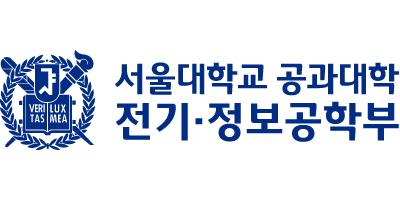[세미나] Nonlinear effects in high-power fiber lasers : The good, the bad, and the ugly.
■ 연 사 : Johan Nilsson (Optoelectronics Research Centre (ORC), University of Southampton)
■ 일 시 : 2019년 11월 21일(목) 14:00
■ 장 소 : 301동 106호
■ Abstract
Because of the tight confinement and long interaction length, fiber nonlinearities are a major limitation of high-power fiber laser sources in different configurations and operating regimes. This includes so-called single-frequency laser sources. These are attractive for a range of applications, such as coherent beam combination in the continuous-wave regime. Coherently combined laser sources are actively pursued for high-power laser sources at MW power level and beyond. One possible application is laser-accelerated nano-satellites for missions to stars (e.g., Proxima Centauri). Although this is a hugely challenging and long-term objective, a major motivation for this approach is that there is no other known technique for sending a satellite to a star, except for the even more futuristic matter-anti-matter drive. Fiber laser sources are attractive for this because of their superb efficiency, but are limited by the nonlinearity of stimulated Brillouin scattering (SBS). I will discuss our work on SBS in fiber laser sources, including fundamental aspects and how it can be managed in practice.
Coherent combination is also attractive in the pulsed regime, in order to reach higher energy. High-energy femtosecond laser pulses can, for example, drive wakefield acceleration of leptons (electrons and/or positrons) to high energy for use in cancer therapy. Another possibility is to use such high-energy leptons to in a collider that replaces the large hadron collider at CERN. However, short pulses in fibers suffer from distortions through nonlinear effects such as self-phase modulation, which is a severe limitation for coherent beam combination. I will discuss our work on phase-control of short pulses in the high-nonlinearity regime.
Stimulated Raman scattering is another nonlinearity. Although this, too, can be a severe problem, it can also be used to create Fiber Raman laser sources. These are famous for their wavelength agility. However, fiber Raman devices offer several attractions even when the wavelength is not of direct importance. For example, Fiber Raman amplifiers can employ standard telecom fibers as the gain medium. These use pure-silica or Ge-doped silica cores and can be fabricated with superb transverse and longitudinal control of the refractive index profile in standard as well as custom designs. The high control can reduce mode-coupling and is thus attractive for high-mode-purity amplification of higher-order modes. In addition, the Raman gain is different from that based on the more conventional stimulated emission also in the saturation characteristics. In contrast to stimulated emission, the Raman gain does not depend on the local signal intensity and there is therefore no local gain saturation. Even though the pump depletion still causes gain saturation, this is a non-local effect. This leads to different gain competition behavior, which is also important for the mode purity. I will present results on high-purity Raman amplification of higher-order Bessel-modes as well as modes with orbital angular momentum.
■ Biography
Johan Nilsson is a Professor at the Optoelectronics Research Centre (ORC), University of Southampton, UK, and head of the High Power Fibre Lasers research group. In 1994, he received a doctorate in Engineering Science from the Royal Institute of Technology (KTH), Sweden, for research on optical amplification. Since then, he has worked on optical amplifiers and amplification in lightwave systems, optical communications, and guided-wave lasers, first at Samsung Electronics and later at ORC. He has co-authored over 400 scientific articles, including three of the world’s four most cited papers on ytterbium-doped fibre devices. He is a fellow of the OSA and the SPIE, and a consultant and co-founder of SPI Lasers. He is a member of the advisory board of the Journal of the Optical Society of Korea and has served as a guest editor for IEEE Journal of Selected Topics in Quantum Electronics, Optics Express, Optical Materials Express, and Optical Engineering. He is a former chair of the Laser Science and Engineering technical group in OSA’s Science and Engineering Council and is currently a program chair for the Advanced Solid State Lasers conference and a member of the steering committee of the EuroPhoton conference.
■담당교수 : 정윤찬


